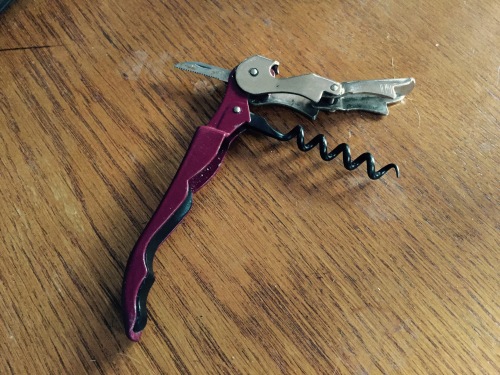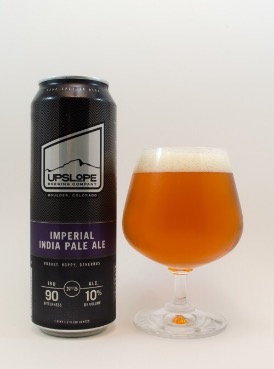I feel like I should put up a big disclaimer on this post. So before you rush to the comments to start calling me Mr. Judgey McJudgerson, you should hear me out. It’s been my experience that there is a significant portion of the American population that doesn’t have a healthy relationship with the toxin known as alcohol. I’m not necessarily referring to the college aged binge-drinkers and early 20-something over-indulgers who are just out to have a good time, man. I think most of that can be chalked up to youthful exuberance. Instead, I’m referring to full-grown adults who after a stressful day/moment/milliseconds of life turn to their friends and say something to the effect of: “Phew! I need a drink!” which is silently suffixed by a look that you would hashtag as #amiright?. And before you can get both legs of your Offended Pants on, you should know that I’ve been and occasionally still am one of those people. However, I’ve been doing some reading over the years…
In my other life, I travel around working with electronic health records for various healthcare organizations and I tend to meet a large number of healthcare professionals, both those of the clinical focus as well as those of the operational or financial focus. To date, my clients have spanned from the Big Island of Hawaii all the way to the coast of Maine so I don’t think my experiences have been regionally focused. As an aside, since I know you’re curious, yes, there have been a few that have taken advantage of my wine education sessions while I was with them as well. But I’ve come to find that this Half-Joking-But-Definitely-Doing-It culture about using alcohol to combat stress is pervasive across the country. Actually, let me put one caveat to that: there’s a contingent that don’t actually drink, but they’ll make the jokes anyway and quickly follow them up with “But I don’t really drink.” and then look at you in a worried fashion in case you still believe that they would ever ingest alcohol.
You can see this cultural mentality just about everywhere. There are the “Mom Blogs” that justify why their glass of wine at the end of the day is necessary, there are the constant references to drinking alcohol as a cure for stress in movies and television (Mad Men, anyone?), and the whole concept of Happy Hour revolves around needing a drink after a stressful day of work. Here’s the thing though, from the medical research readings and hours of experimentation and observation I have done on this subject, I don’t think it actually works. I may not be an expert on the subject, but I am a reasonably intelligent person with the internet at my disposal (Plus a Health Informaticist who synthesizes a lot of public health recommendations) and one time I took that Stress Management class in college so I can at least have a reasonably and somewhat informed opinion on the topic. Let me tell you how I arrived at this conclusion.
First, let’s define the major components of what happens when we get stressed. Almost immediately after encountering a stressor, whether it be rush-hour traffic, a casual meeting invitation from your boss to review your performance lately, a tiger, or a tiger driving next to you in rush-hour traffic, your adrenal glands begin to produce two hormones: Adrenaline and Norepinephrine. These two hormones get your body prepped for what is commonly referred to as the “Fight or Flight” response. Your heart starts beating faster, your blood pressure rises, your muscles tense up and your brain starts calculating whether you should get those fists ready or sprint as fast as you can away from the situation. Around the same time your Hypothalamus begins producing Corticotropin-Releasing Hormone (CRH) and your Pituitary Glands start producing Adrenocorticotropic Hormone (ACTH). Neither of these have much of an external effect, but the combination of them eventually produces the hormone called Cortisol. Cortisol is the breaks to Adrenaline and Norepinephrine’s accelerator and it’s main purpose is to help regulate fluid levels in the body and control blood pressure so your body doesn’t spin wildly out of control. In other words it is there so you don’t die. However, Cortisol is also what we associate with the feelings of stress and in fact we can directly correlate our feelings of stress with the amount of Cortisol flowing through our bloodstream.
Once the stressor is no longer an issue, the body self-regulates and the levels of all three hormones begin to reduce. These hormones aren’t unique to the stress cycle. You may have heard of them in terms of other bodily functions. For instance, the norepinephrine pathway is manipulated by a drug to maybe-but-most-likely-not-because-we-have-no-idea-what-it-is-actually-doing* treat depression. Cortisol, is the hormone that helps us wake up in the morning. And so on and so forth. So when thinking about managing stress, it is not a matter of eliminating these hormones from appearing in the first place, but allowing them to effectively balance themselves. Acute stress, or stress that is endured for a short period of time and dealt with generally will not have any negative effects on the body. Chronic stress, or constantly dealing with stressors and not managing them effectively is what leads to negative health consequences.
Now let’s put alcohol into the mix. The amount of research on stress and alcohol is fairly limited, but there is at least enough to contradict one big assumption. The general working theory that your average Happy Hour patron has is that alcohol can be used as a tonic to relieve stress. Basically, the thinking is that alcohol applied to stress is like aloe applied to a mild sunburn: Apply liberally and eventually the irritant will go away. Unfortunately, it appears that mixing alcohol with stress is more like a two-way street than a topical application. Not only does alcohol affect the stress hormones, but the stress hormones appear to have effects on the body’s reaction to alcohol as well.
When you are stressed and you take those first couple of gulps of your apple-tini, I think most people would report that you do feel better. And why not? Alcohol, in small doses, has a relaxing effect through stimulating the release of Dopamine and Serotonin. Serotonin, consequently helps to mitigate Cortisol. These two hormones don’t necessarily get rid of the stress hormones, but they make us forget about them for a bit. However, at some point, that same alcohol begins to turn into another source of stress on the body itself. What point is this? The jury appears to still be out and I’m sure there are a myriad of variables that can affect this, but the threshold is probably lower than we all think. Regardless, this means that upon reaching this point, the “medication” quickly becomes an additional source of stress piled on top of the stress that has built up in your body. This is pure conjecture here, but perhaps “Angry Drunks” are just those who are really stressed out people who make themselves more stressed out by consuming copious amounts of alcohol.
From the opposite side of things, the stress hormones have a general effect on how our body responds to the alcohol consumed. This is mostly seen in a dampening effect of our intoxication level. Therefore, people tend to consume more alcohol when they are stressed out because that point where you feel intoxicated arrives later than it typically does. How this happens is still not clear, but you could probably see this in your own drinking habits if you kept a journal of your stress levels while drinking (Doesn’t that sound like fun?!?!). Consequently, if you are continually drinking while stressed out, your alcohol tolerance level will probably keep going up as well which could lead to chronic alcohol abuse/dependency, poor sleep, prohibition, and of course, more stress. In other words, the very thing you are using to reduce your stress becomes the source of it.
Now who needs a drink after reading all of that? Just kidding! Don’t do that. I think the lesson that can be pulled from all of this is that before we drink we should be aware of our stress levels and the reasons why we are reaching for a drink to begin with. If you’re stressed, and you have a glass of wine or two with dinner, it is probably unlikely that you will suffer any consequences. In fact, you’ll probably just enjoy it. However, if your habit is to binge on a few drinks after a stressful day of work or child-rearing, that habit could be detrimental to your long-term health. In fact, it might even be a good public health campaign to encourage people not to drink if they are feeling stressed and save the drinking for the happy or at least mood-neutral times. I think there is some evidence to state that stress or just being in college could be a major contributing factor in the over-consumption of alcohol. Stress can be better addressed through other activities like exercise or meditation which there is plenty of positive evidence to support. Therefore, next time you get the invitation or inclination to indulge in some alcohol application to your stress problem, take a second to think about it, and then politely decline. Save the drinks for when you can enjoy them since that’s what they are there for anyway.
*This isn’t a joke, the drug commercial is legally obligated to state that they have no idea how the drug actually works.
Some additional links for more fun reading:
http://www.ncbi.nlm.nih.gov/pubmed/?term=emma+childs+alcohol+stress
http://www.huffingtonpost.com/2013/04/19/adrenaline-cortisol-stress-hormones_n_3112800.html

















